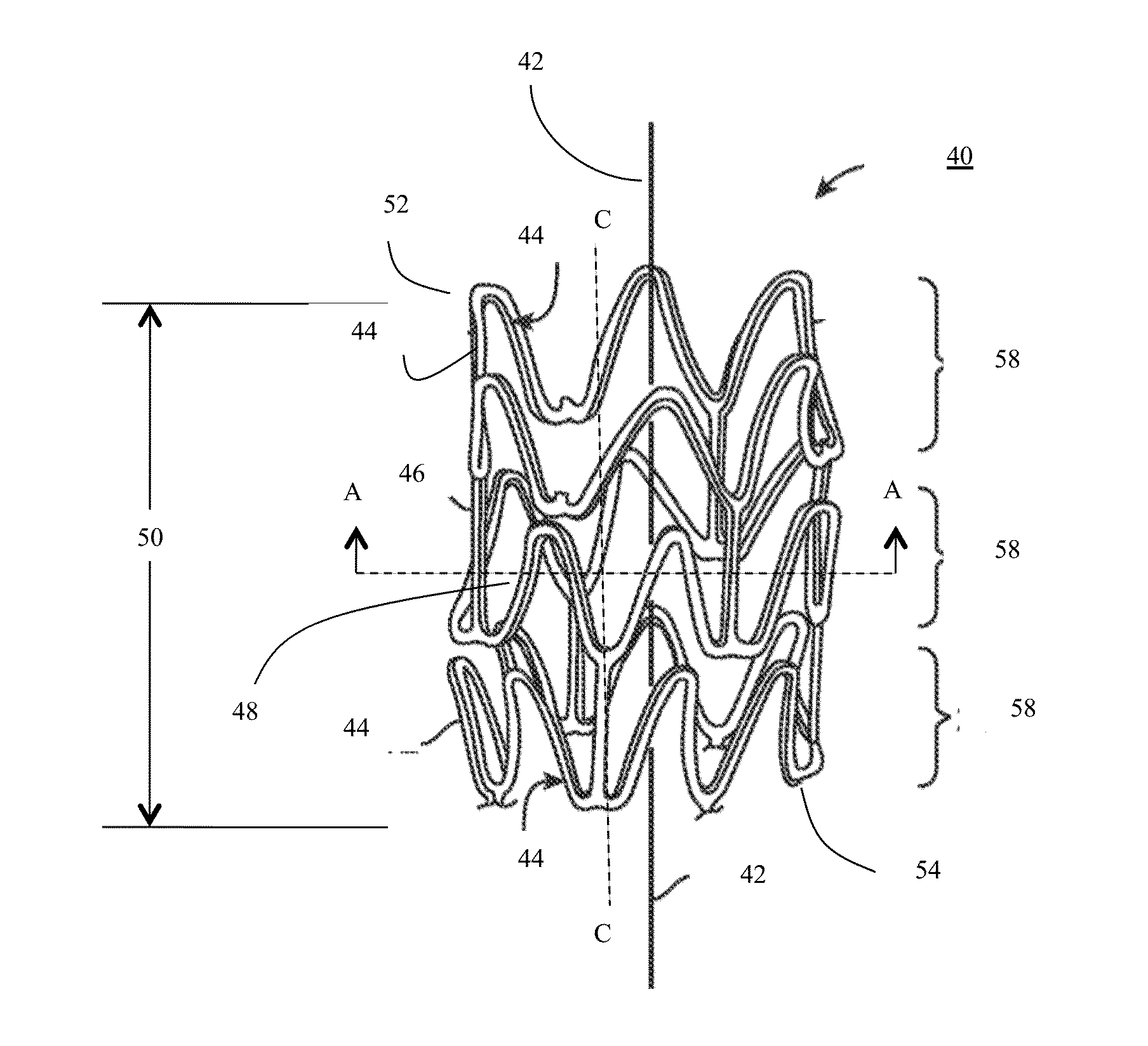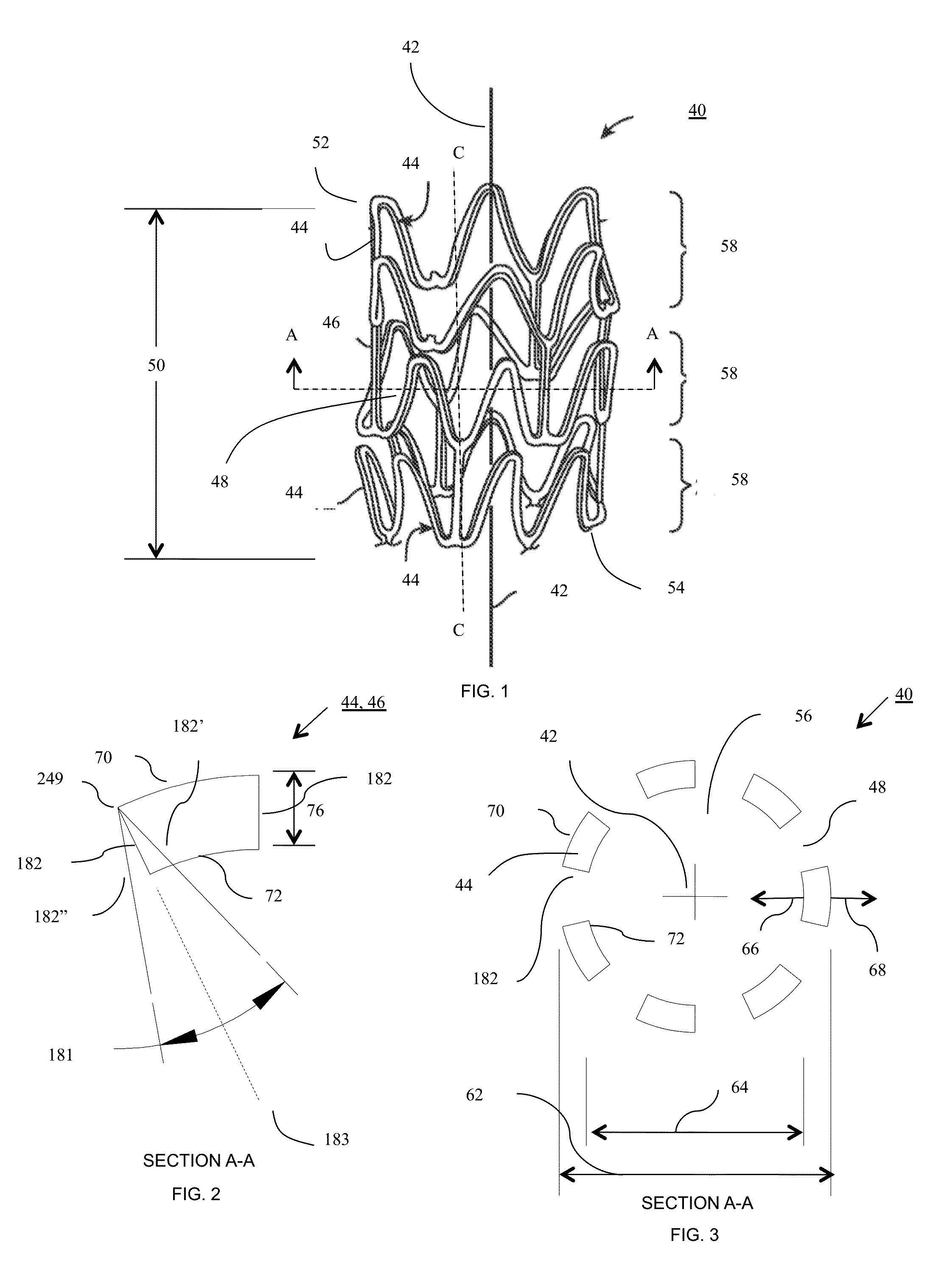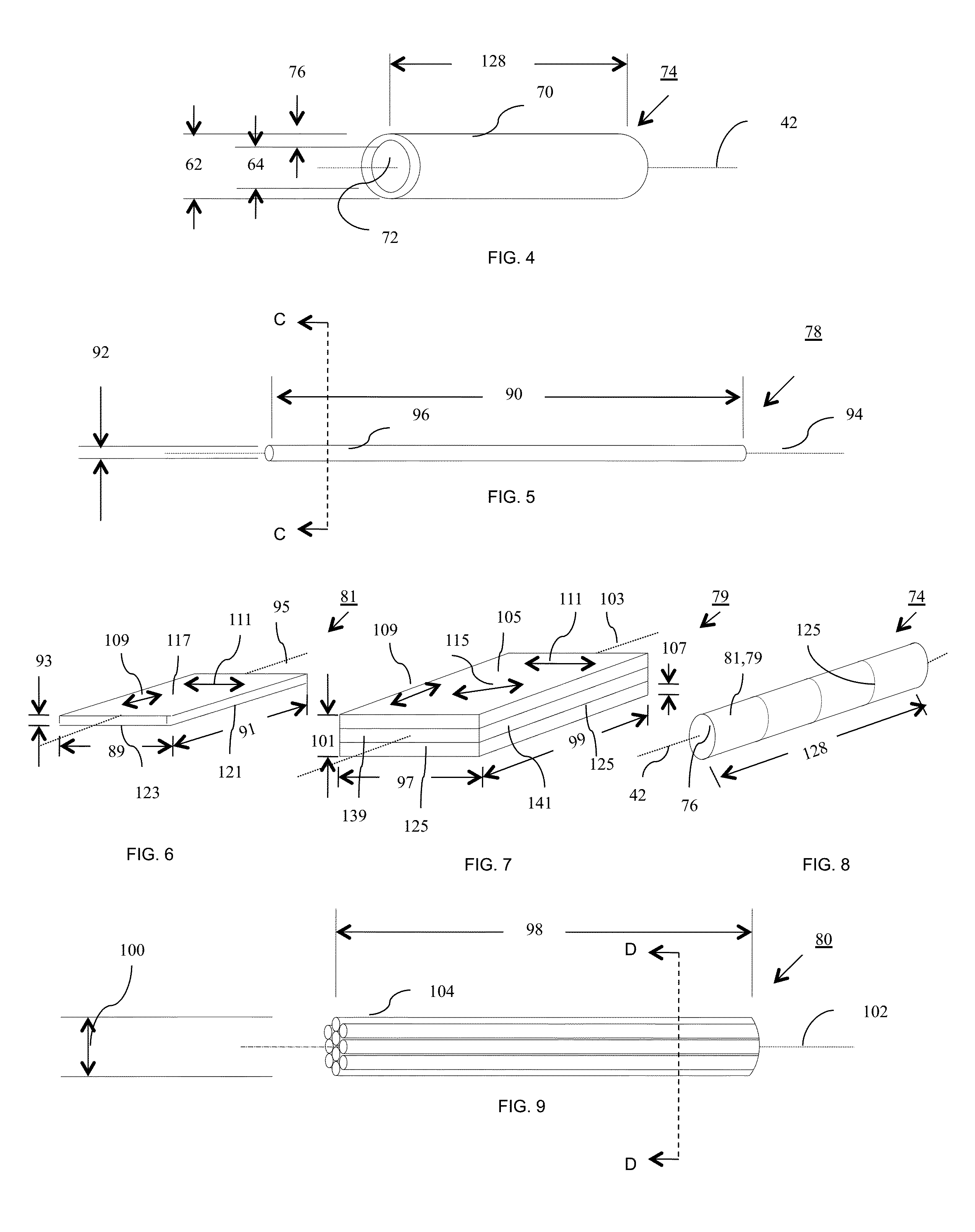Bioresorbable Stent
- Summary
- Abstract
- Description
- Claims
- Application Information
AI Technical Summary
Benefits of technology
Problems solved by technology
Method used
Image
Examples
example 1
Bioresorbable (PLLA) Stent Made by Solution Electrospinning Process
[0430]Particles of PURASORB PL-38 having a somewhat translucent to opaque appearance, which is a homopolymer of L-lactide (PLLA) having molecular weights in the range of 121-298 kg / mol and 298-727 kg / mol, were dissolved in hexafluoroisopropanol (HFIP) at 2.5, 5, 11, and 15 weight percent. The solutions were clear in appearance. The PLLA solutions were electrospun from a syringe equipped with a 22 gauge needle using 15 kV potential, a throw distance of 12-16 cm, and a syringe flow rate of 5 mL / h. To form a mesh wall thickness for use in a precursor tubular construct, having a wall thickness of different diameter fibers, the 2.7 mm diameter drum or mandrel having a length of twelve inches was rotated at 600, 1000, and 1500 rpm to achieve the different degrees of fiber orientation and a wall thickness of 150 microns. The precursor tubular construct tubes were dried under vacuum for two days to remove the residual HFIP a...
example 2
Wall Thickness Suitable for Production of Prosthesis—Flat Sheet
[0435]A blend of poly L-Lactide (Trade name PURASORB PL-38 blended with PURASORB PL-32 available from Purac, Gorinchem, The Netherlands) was dissolved in HPLC-grade dichloromethane (CAS 75-09-2) (available from Fischer Scientific, Boston, Mass., USA) at a 5% weight percent in a 20 ml scintillation vial (available from Fischer Scientific, Boston, Mass., USA) and electrospun. The polymer solution pumped through a stainless 21 gauge by ½ inch steel blunt needle (Part NE-211 PL-25, Available from Amazon.com) at a rate of 1.5 ml / hour to 0.2 ml / minute. A high voltage power supply (available from Gamma High Voltage, Ormond Beach, Fla., USA) was connected to the syringe needle and a three inch diameter by eight inch long rotating cylindrical-shaped mandrel or collector plate wherein the power supply was set at 90 milliamps (mA) and 10-12 kilovolts (KV). The throw distance, which is the distance between the end of the syringe nee...
example 3
Wall Thickness Suitable for Production of Prosthesis—Tube
[0438]The flat sheets approximately 8 inches by 9.43 inches prepared as described in EXAMPLE 2, were cut into longer strips 1 inch wide by 8 inches long and 1 inch wide by 9.43 inches long to obtain strips of fibrous material having fibers aligned in different directions. These strips were wound around a steel 5 mm diameter by 200 mm long steel shaft having dimensional variation of less than 0.008 mm (model 6112K37 available from McMaster Carr, Robbinsville, N.J., USA). The assembly was placed in an oven at 135-425 degrees Fahrenheit and baked until the fibrous material wrapped around the mandrel turned from an opaque white appearance to a translucent appearance. In some cases the assembly was removed from the heat prior to becoming fully translucent. In other cases the assembly was removed from the heat prior to losing it opaque white appearance. The heated fibrous material and shaft were then rolled over a flat plate having ...
PUM
| Property | Measurement | Unit |
|---|---|---|
| Temperature | aaaaa | aaaaa |
| Fraction | aaaaa | aaaaa |
| Thickness | aaaaa | aaaaa |
Abstract
Description
Claims
Application Information
 Login to View More
Login to View More - R&D
- Intellectual Property
- Life Sciences
- Materials
- Tech Scout
- Unparalleled Data Quality
- Higher Quality Content
- 60% Fewer Hallucinations
Browse by: Latest US Patents, China's latest patents, Technical Efficacy Thesaurus, Application Domain, Technology Topic, Popular Technical Reports.
© 2025 PatSnap. All rights reserved.Legal|Privacy policy|Modern Slavery Act Transparency Statement|Sitemap|About US| Contact US: help@patsnap.com



